Why is Shiva called as Gajasur Samhara?
Mahishasura was a very powerful demon in the form of buffalo who started tormenting people on earth. Goddess Durga, after a horrific battle carried on for nine nights, killed him on the tenth day, now we celebrate as Dasara.
Mahishasur had a son named Gajasur, in elephant form. Burning in the flames of revenge, Gajasur made a harsh atonement to Brahma. Bramha appeared in front of him and granted a boon that even Vishnu cannot kill him. After a while, drunk with power, Gajasur became lord of all three worlds and captured the deities to worship him as the true god. He started tormenting sages, pilgrims, devotees, and innocent people on earth in the arrogance of his boon given by Brahma.
One day, he arrived at Kashi, the favorite city of Lord Shankar and started plundering and creating havoc. Devotees came running to Shiva and prayed to him to rescue them from the wrath of the powerful demon.
Lord Shiva arrived at Kashi and fought a ferocious battle with Gajasur. Bholenath entered the body of the demon, opened him from inside with his trident. Just before dying, Gajasura apologized to Mahadev for the sins and requested Mahadev to wear his skin on the body. Being Bhole Naath, Shiva accepted his request and since then, Shiva has been called Gaja Charmambara Dhari, i.e. the one who wears the skin of an elephant.
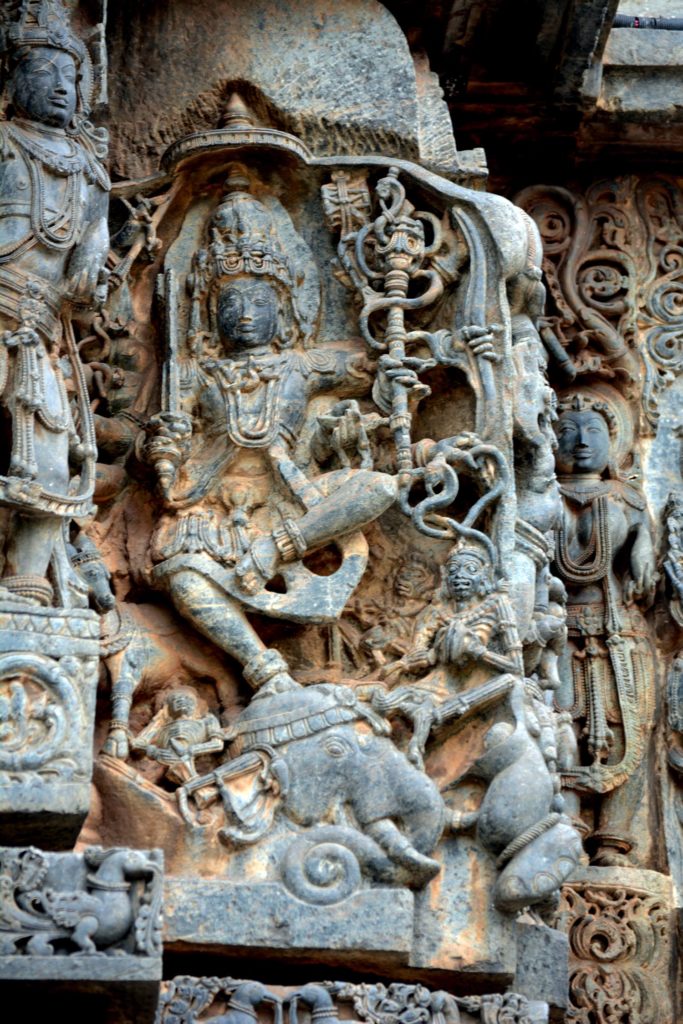
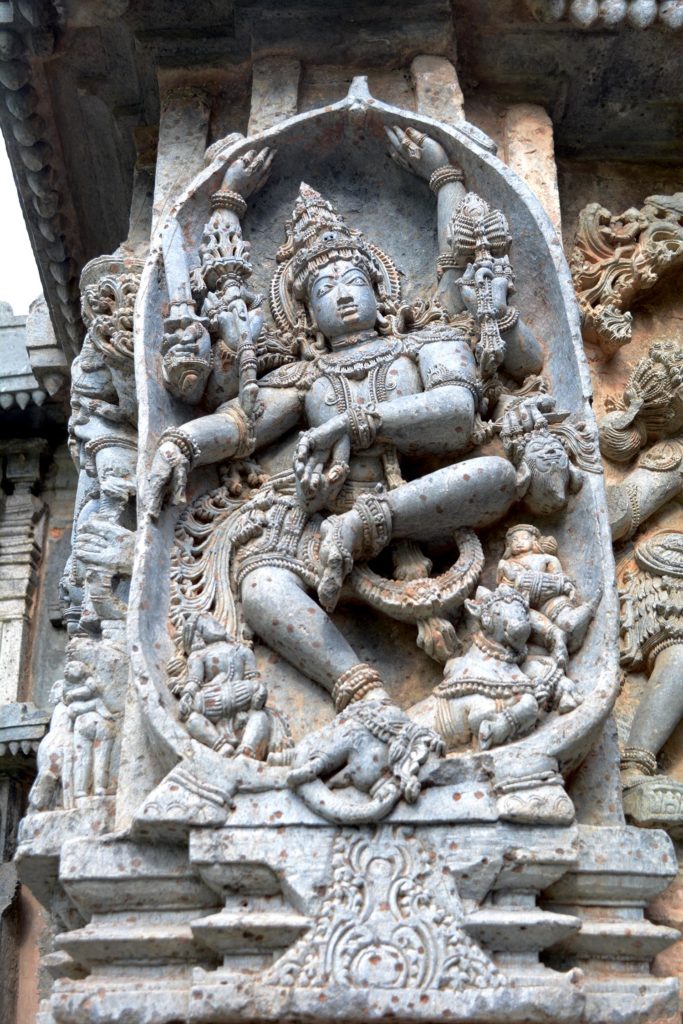
Here, you can see three sculptures of the same story. One from Chennakeshava temple- Belur, Somnathpur temple and third is from Hoysaleshwar temple, Halebeedu.
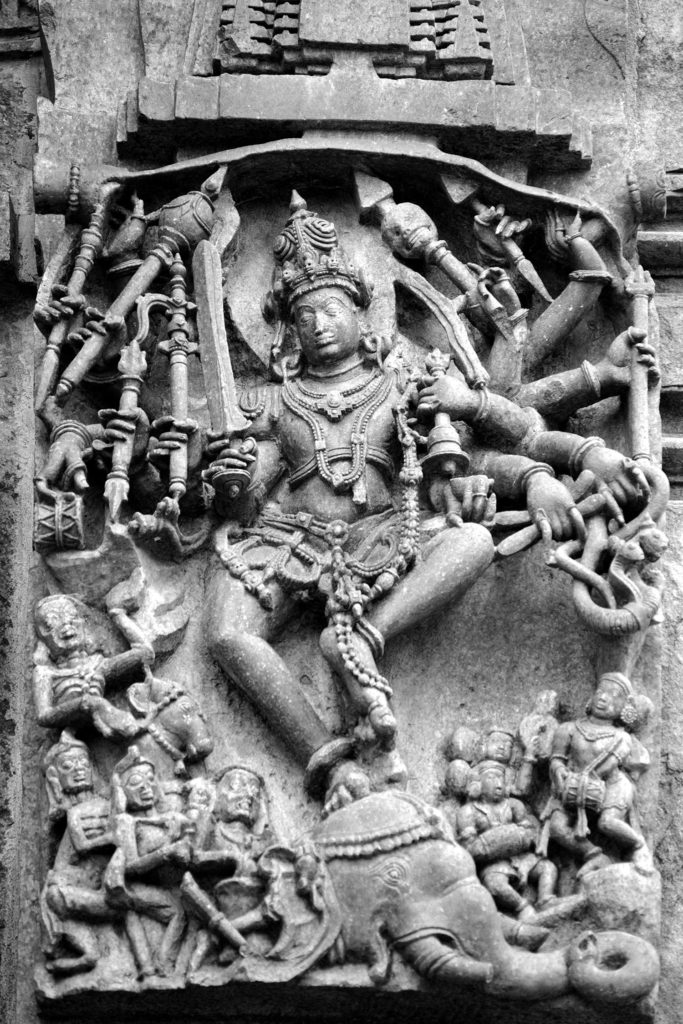
Furious Mahadev of Belur has lost himself completely in a dance, holding the thick skin of the elephant around himself with his three hands. His remaining hands are doing mudras of the dance and holding the weaponry. His crown is decorated with Rundamala, i.e garland of skulls.
Belur shiva has 15 hands visible. In his hands, he is carrying unstoppable Vijay trident, a Damaru from which he created the universe, Chandrahas sword, Kapala the begging bowl, Pasha or Pashupatastra, Deer, Ankusha (goad), Vajra (thunderbolt), Arrow, Gada (mace), Khatavanga, Bell, Pinaka bow which was later broken by Prabhu Ram, a snake, the elephant’s tusk and Akshamala.
You can clearly see the hindlegs of elephants on the top of the sculpture. Elephant’s head on which Shiva is dancing cannot sustain the pressure and hence, the demon’s eye is bulging out. Shiva’s Pretas and Ganas are dancing around him, praising him. Nandi is looking at his master with amazement.

An unknown sculptor at Halebeedu has created a true masterpiece in this Gajasur Samhara Murti. You can see the tail of the elephant above the head of eight-handed dancing God. If you look carefully, daemon’s thick elephant skin is pierced by Mahadeva’s sharp thumbnail of his left hind hand and the finger is coming out from the other end of the skin. His lower left hand is carrying a pot along with a severed head of Brahma.
Demon’s eyes are bulging out of extreme pain. His lower feet are decorated with decorative bands. Gajasura is wearing a decorative tiara, ornating his large head.
He is wearing a tall crown with several small-sized human skulls on it. He is wearing Kirtimukha on his arm. His fingers are decorated with many rings. He is wearing a garland called Vanamala, starting from behind his broad shoulders, and reaching to his knees. A highly ornate belt, called Mekhala is decorating his dancing thighs. Shiva’s jewelry is swinging in a graceful manner as he is dancing inside the elephant while his Ganas accompanies him with drums and Nandi is on his right-hand side looking out.
If you take a closer look, one of his Gana is adjusting the ropes of his drums in order to tune the drumbeat.
Here, Shiva is seen in a rage, while his teeth coming out, successfully conveys the violence. He is acquiring an impossible pose while dancing, confirms that he is in total control of his body, being the master of Yog. Here, Bholenath is balancing in such an elegant manner, as same as he balances the universe.
There are many versions of the Gajasur stories available across India with minute variations. Some devotees believe that the same head of the demon was attached to Lord Ganesh by Shiva to resurrect him. You can find references to these stories in Koorma Purana, Shiva Purana, Varaha Purana etc. In north India, the saga of demon Andhakasur is mixed with Gajasur’s story.
The same Gajasur Samhara idol can be found in the fort of Gwalior.
References:
1. Shiva Maha Puran 1.2.147
2. South Indian Sculptures: A Reappraisal, By Pratapaditya Pal, Boston Museum Bulletin, Vol. 67, No. 350 (1969), pp. 151-173 (23 pages), Published by Museum of Fine Arts, Boston, MA USA
3. http://hinduonline.co/Scriptures/Puranas/ShivaMahaPurana.html
4. https://en.wikipedia.org/wiki/Gajasurasamhara
5. Jewel Box of India, Glories of Belur and Halebeedu, By Dr. Neelkanth Kote
6. Bharatiya Murtishastra, By Dr.N.P.Joshi, Prasad Publications, Pune, Maharashtra.
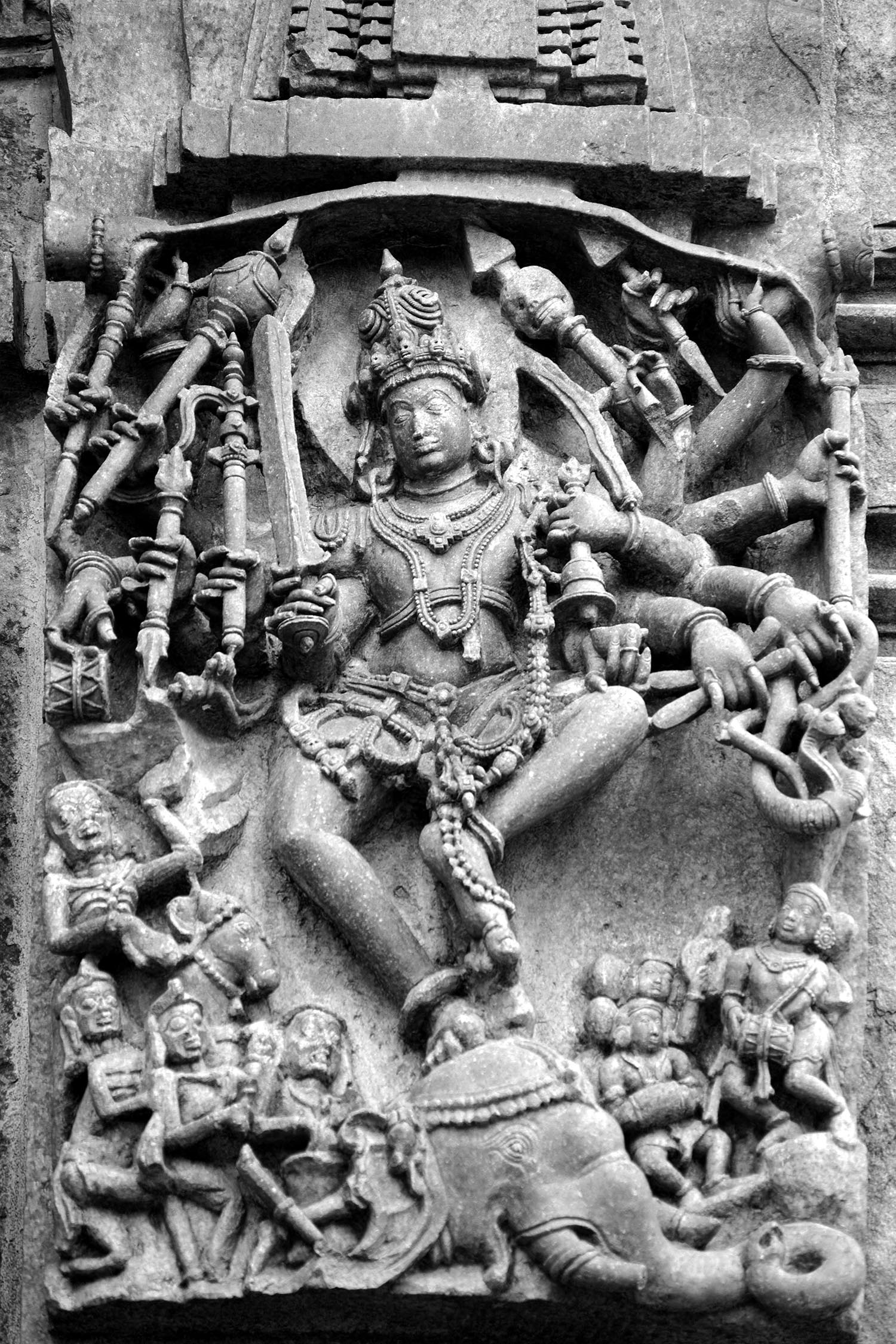
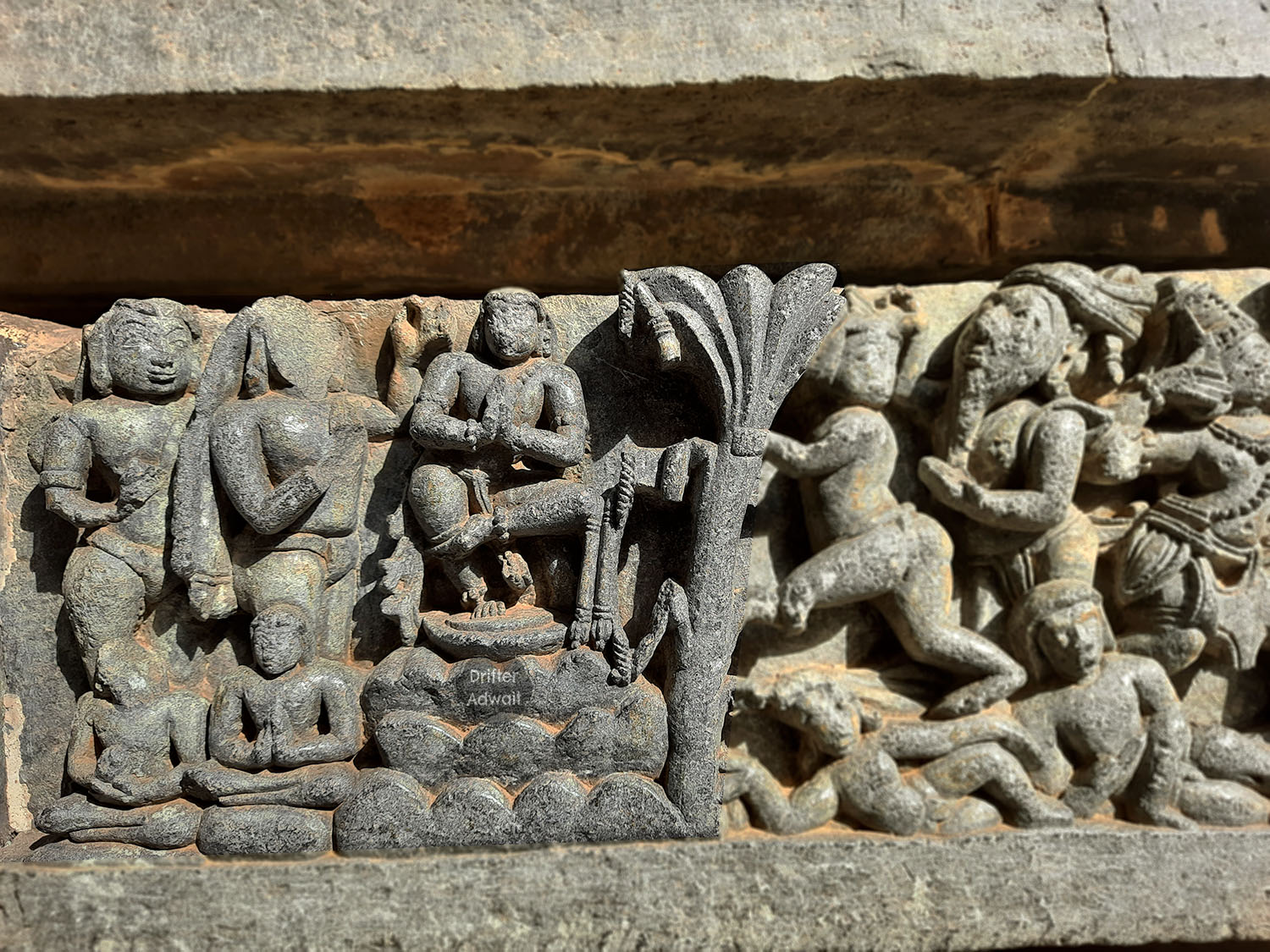

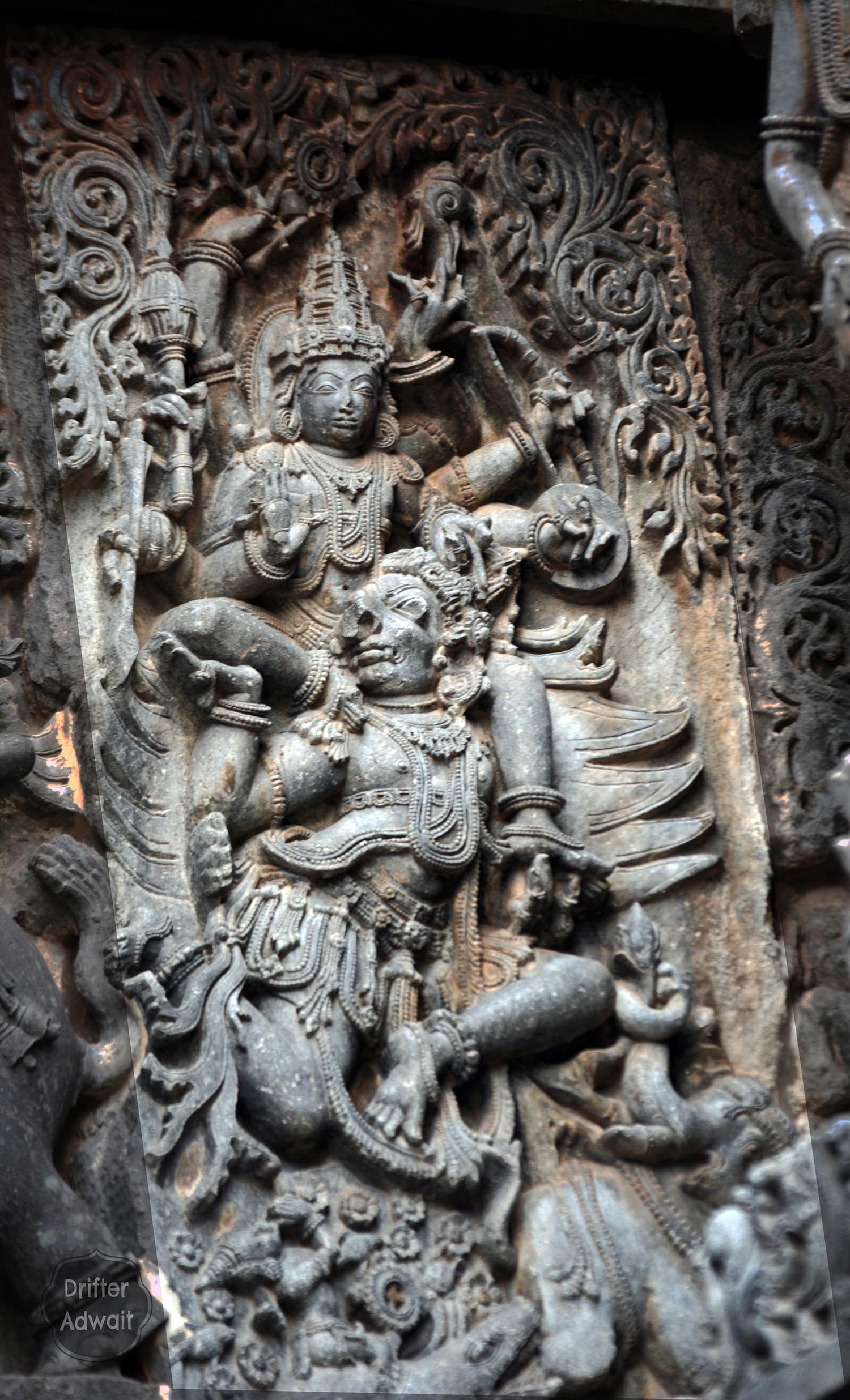
Really informative article.Salute to the unknown sculptors. Will like to visit the temple
Plan a tour to Bangalore, let’s visit these temples.
Well written. There is a similar sculpture at Gharapuri caves near Mumbai.
I have been to Gharapuri for few times but never noticed it. Found excuse to visit Gharapuri once again. ?
अप्रतीम. प्रथम मूर्ती पाहिली नंतर माहिती वाचली. पुन्हा मूर्ती पाहिल्यावर नव्यानेच अनुभूती आली.
अनामिक मूर्ती काराची कमाल आहे ही मूर्ती. खूप सुबक आणि कल्पकतेने घडवलेली.